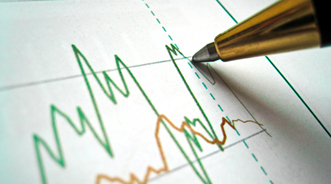NAAA: Economic Conditions to be Ripe for 13.5M New-Vehicle Sales in 2011

By subscribing, you agree to receive communications from Auto Remarketing and our partners in accordance with our Privacy Policy. We may share your information with select partners and sponsors who may contact you about their products and services. You may unsubscribe at any time.
FREDERICK, Md. –
The rebound in gross domestic product has tapered off as of late, but the economy and GDP will likely make the improvements needed for there to be roughly 11.5 million new vehicles sold for full-year 2010 and about 13.5 million for 2011, according to the National Auto Auction Association’s Auction Industry Report.
NAAA economist Ira Silver explained that economic growth has dipped to 1.6 percent in the most recent quarter examined. During the preceding quarters, the economy showed improvements of 5 percent and 3.7 percent.
Pushing the bulk of the drop-off in growth was the fact that imports climbed 32 percent, Silver noted. It was 1984 the last time import growth was that high, he added.
The recent quarter’s GDP growth was reduced by roughly 4.5 percentage points because of the import uptick, Silver pointed out.
It’s not completely a bad thing, though.
“While higher imports are not positive for U.S. production, they do reflect strong buying by U.S. consumers and businesses,” Silver explained.
And when the economy is recovering, the pattern of a dip following a spike — like the one the U.S. just experienced — is actually common, he pointed out.
Subscribe to Auto Remarketing to stay informed and stay ahead.
By subscribing, you agree to receive communications from Auto Remarketing and our partners in accordance with our Privacy Policy. We may share your information with select partners and sponsors who may contact you about their products and services. You may unsubscribe at any time.
Not only that, Silver noted that the rebound is actually faring better than the recoveries after the two most recent recessions before this one.
“Looking at GDP in the first four quarters after the trough in the last three recessions, we see that real GDP in currently further above the trough quarter in this recovery than it was in the 1990-91 and 2001 recoveries,” he explained, citing a graph comparing the three periods.
In the current recovery, the real gross national product is roughly 3 percent stronger four quarters out from the trough, the data indicated. In the rebound from the 1990-91 recession, the improvement was just above 2.5 percent by the same point, and for the 2001 recession, it was less than 2 percent stronger than the trough level.
“Slowdowns in the early part of a recovery usually occur as the growth leadership shifts from inventories to consumer and business spending,” Silver shared. “That translation does not usually happen smoothly and we often see a period of slower growth before the recovery once again picks up steam.”
In this particular case, Silver anticipates economic momentum to resume “in the quarters ahead.” The election- and tax-related “uncertainty” will have died down, and with that will be an uptick in economic growth in the next few quarters. Average GDP growth in the next year is projected to be 3 percent, according to Silver.
“While not as strong as after the serious recessions in 1973-75 and 1982, it will be strong enough to bring the unemployment rate down slowly and support new light vehicle sales of about 11.5 million this year and 13.5 million next year,” he stated.


